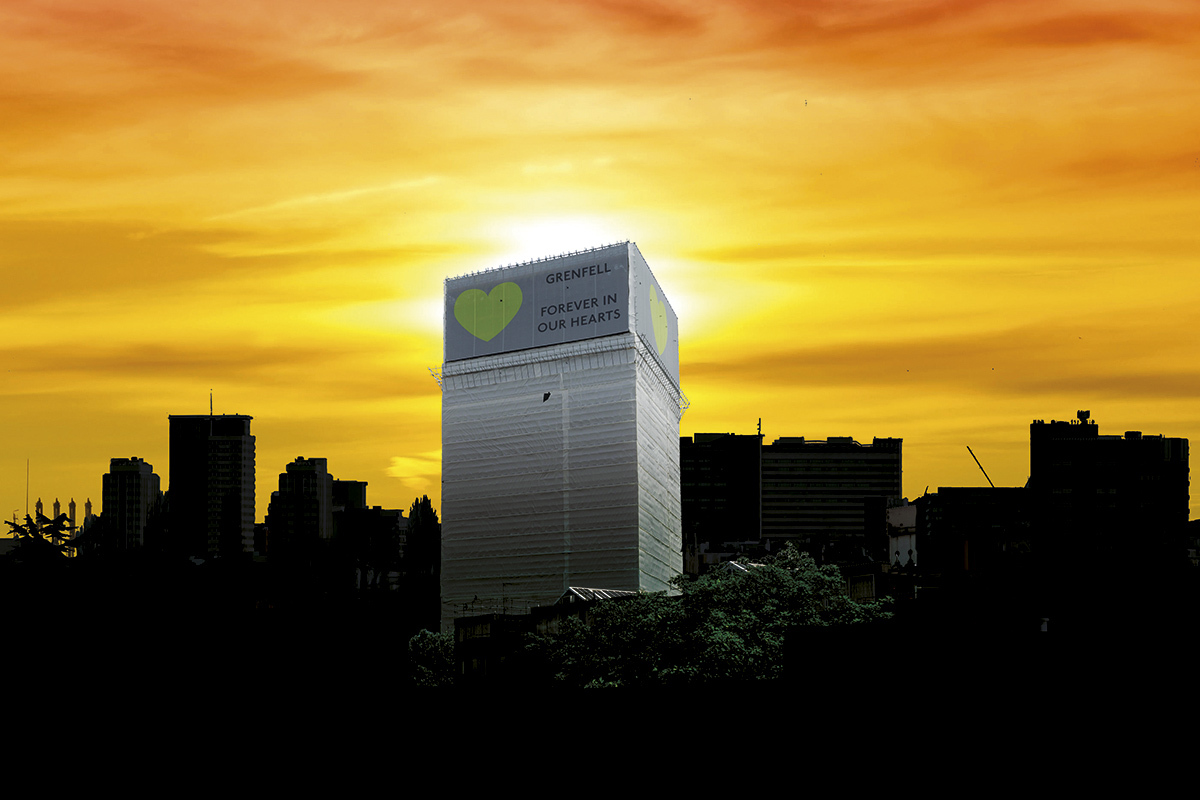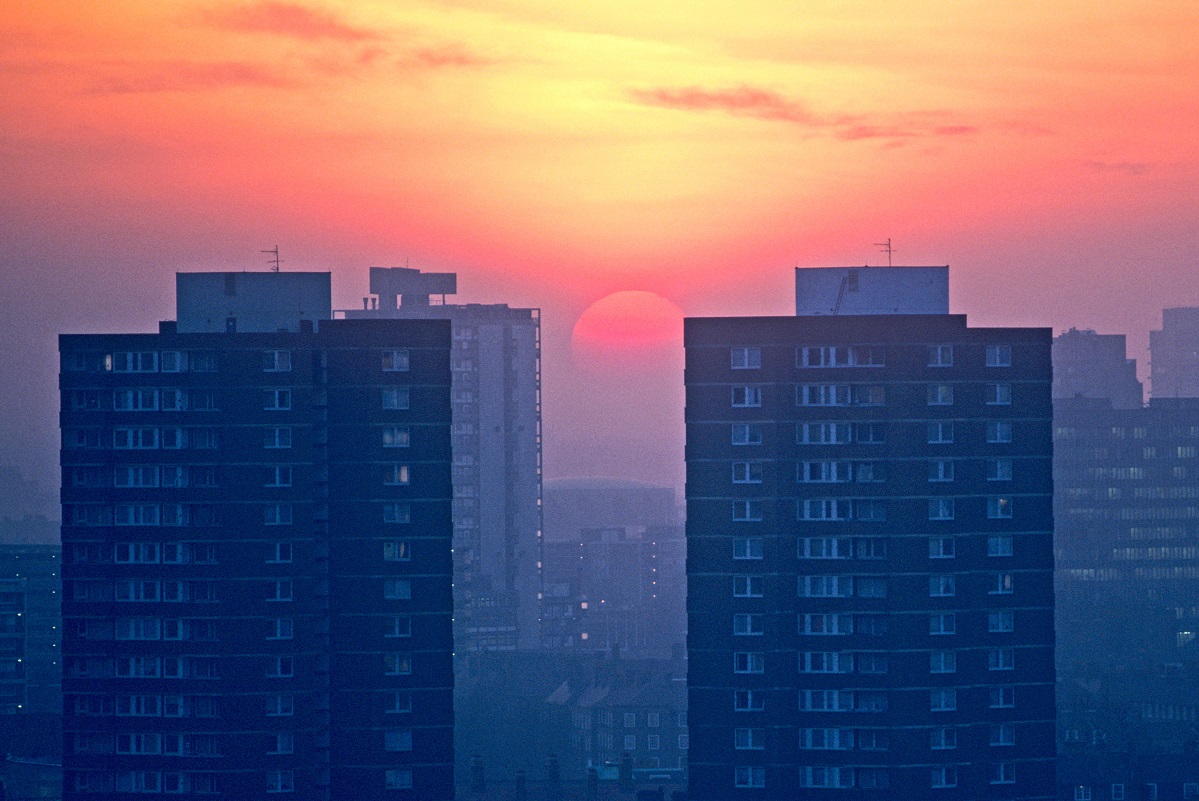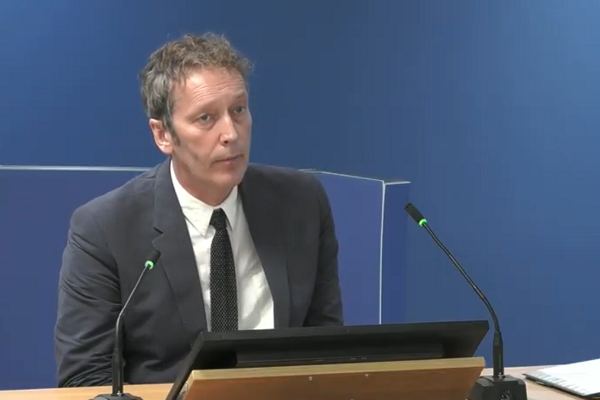Six years on from Grenfell, why do most social housing blocks still not have sprinklers or fire alarms?
New data gathered by Inside Housing shows only a fraction of social housing blocks have been retrofitted with sprinklers or fire alarms. The sector says government guidance and a lack of funding are to blame. Peter Apps reports
“It is recommended that your department encourages providers of housing in high-rise residential buildings containing multiple domestic premises to consider the retrofitting of sprinkler systems.”
It is just over 10 years since the words above were written by coroner Frances Kirkham, after her investigation into the six deaths at a fire in Lakanal House, south London, in 2009. The letter was written under rules designed to prevent future death.
We know now that behind the scenes, government officials did not take the recommendation seriously, calling it in an internal briefing “a big and essentially pointless task”.
Instead, the government should “tell the coroner we’ve already raised this with social landlords… so we don’t plan to do anything”.
“We only have a duty to respond to the coroner, not kiss her backside,” added the official, Brian Martin, in evidence revealed by the Grenfell Tower Inquiry.
In his letter back to the coroner, Eric Pickles, secretary of state, did as Mr Martin advised. He said a letter had previously been sent following a coroner’s inquest into firefighter deaths in Southampton and no further action was taken.
Mr Martin later told the inquiry that he believed the government – then pursuing a programme of austerity – would not be willing to provide council landlords with the ‘new burdens’ funding to support the retrofit of sprinklers.
And so, the country’s high rises remained mostly sprinkler-free. We all know what happened next: by 2017, only around 2% of social housing blocks had been retrofitted with sprinklers – and Grenfell Tower in west London was not one of them.
When a fire broke out in the kitchen on the fourth floor six years ago this week, it quickly broke out of the window, ignited the combustible cladding outside and started a fire that cost 72 people their lives.
One might have expected that in the six years following the fire, this position would be reversed – that sprinklers, which have proven to save lives in fires, would become commonplace in social housing high-rise buildings.
New data gathered by Inside Housing from 37 large social landlords shows that they have not.
The landlords collectively own 1,768 high-rise residential buildings, comprising more than 87,000 individual flats.
Only 334 of these blocks have been fitted with sprinklers, just 18.9% of the total. The figures are worse when you consider that 181 of the sprinklers have been fitted by one local authority (Birmingham). Among the rest, just 8.6% of blocks have been retrofitted with sprinklers.
They are also lacking fire alarms capable of sending an alert to the whole block – something that was not recommended after Lakanal but was recommended by the Grenfell Tower Inquiry in October 2019. Just 217 blocks have been fitted with such a device – 12.2% of the total.
So why, six years on from the horrendous, preventable disaster at Grenfell Tower, has more not been done to install sprinklers and fire alarms?
Sprinklers
Building regulations in the UK have required sprinklers to be fitted in new buildings taller than 11 metres since November 2020, but there remains no requirement to retrofit them to existing blocks.
It costs around £500,000 to retrofit sprinklers per block – with obvious variance for the number of flats – and there has been no government grant to support councils or housing associations to do so.
In fact, just three months after the Grenfell Tower fire, central government refused to even grant local authorities further borrowing capacity to pay for sprinklers, branding them “additional not essential”.
Wandsworth Council in south London set out plans to retrofit sprinklers across all 100 tower blocks it owned that have more than 10 storeys in August 2017. At the time it estimated this would cost £29.5m, at an average of £4,622 per flat.
But the plans never went ahead and to date, none of the blocks have been fitted with sprinklers.
“The government’s Building Safety Fund for blocks 18 metres high and over is not comprehensive for social housing”
Ian Stewart, assistant director of housing management at the borough, explains that the council had made an application to the Property Tribunal to establish if it had a blanket authority under the lease to fit sprinklers in leasehold properties and to charge for the work. The application was not successful.
“We have a very high number of leaseholders in these buildings and the advice from fire safety engineers was that to be effective, a sprinkler system needed to be fitted to all properties in a block,” he says.
He adds that the borough went ahead with installations in sheltered schemes and hostels that had no leaseholders, but decided to wait to see if the Grenfell Inquiry made any recommendations regarding the retrofitting of sprinklers.
Money earmarked for the sprinkler retrofit has now been allocated to other important fire safety measures.
“New funding would be required if we were to be able to proceed with the retrofit, but we still need to be able to undertake works in leasehold properties,” Mr Stewart states.
Across London, they are not alone. Of 14 London boroughs to respond to the survey, 41 sprinkler systems have been fitted in 771 blocks – just 5%.
A spokesperson for London Councils, a group representing London boroughs collectively, pointed to finances as the primary reason.
“Housing Revenue Accounts [HRAs] in London are under exorbitant pressure,” the spokesperson says.
“Financial constraints are inhibiting faster progress. The government’s Building Safety Fund for blocks 18 metres high and over is not comprehensive for social housing. The Building Safety Act and Fire Safety Act brought new unfunded burdens to London boroughs at a time when resources and capacity were already stretched.
“We will continue to raise boroughs’ concerns with ministers and seek more support – including more funding – for fire safety work in London’s high-rise social housing.”
Boroughs tend to follow the advice of assessors and fire engineers, which typically involves fixing issues with facades and fire protections inside buildings, but will rarely recommend sprinklers.
While the London Fire Brigade has lobbied for the use of sprinklers nationally, its local enforcement focuses on maintaining compartmentation, the operation of fire doors and management of communal areas.
This is a reflection of fire strategy in the UK, the underpinning philosophy of which has not changed greatly since the Grenfell Tower fire.
The guidance places a large emphasis on ‘compartmentation’ – the use of ‘passive’ fire protections such as fire doors, fire-stopping and walls and floors with two-hour fire resistance to hold fire within a single compartment.
If exits are then kept clear and sterile, the theory is that the occupants of the flat where the fire starts can leave safely and the fire will not spread elsewhere in the building.
As such, the focus of assessors, building owners and enforcement teams from fire services is on maintaining these protections, not fitting additional layers of protection such as sprinklers.
Professor Guillermo Rein, professor of fire science at the Department of Mechanical Engineering of Imperial College London, explains that the UK places a particular emphasis on compartmentation to protect buildings, while other jurisdictions prefer to rely on suppression.
“In the US, it would be unthinkable not to have sprinklers in a high-rise building, but there is much less focus on fire doors, for example,” he explains. “In the UK, the additional layer of fire protection from early suppression is not valued.”
But this approach may be misguided. First, the changing nature of high-rise buildings, whether through the addition of combustible materials to facades and poor internal maintenance (like at both Grenfell Tower and Lakanal House) or new construction methods like timber frame or modular, may make our assumptions about compartmentation less reliable.
“Lithium fires are explosive. You go in about 15 seconds from a bit of smoke and overheating to a very big fire… A sprinkler will keep the heat from the flames down and stop it spreading”
Sprinklers would add another layer of protection to keep people safe if compartmentation fails. This can happen if a fire escapes out of a window – even in a block where all the passive fire protection is working correctly.
“If the minimum standard was set 20 years ago, but you have new hazards arriving in the built environment every day, it may no longer be appropriate,” Professor Rein says.
Pioneering research from the University of Leeds last year also showed that high-rise fires are more risky: there is a higher chance of fatality, in part because it takes longer for firefighters to access the building, get up to the fire floor and set up. It found that it takes more than 27 minutes to respond to a high-rise fire, compared with seven minutes and 45 seconds in a house. This dramatically increases the chances of fatalities. Sprinklers, however, provide a way to get water on a fire immediately.
There is also the increasing risk of lithium ion batteries, which have caused some high-profile tower block fires recently.
“Lithium fires are explosive,” says Arnold Tarling, a chartered surveyor and fire safety expert. “You go in about 15 seconds from a bit of smoke and overheating to a very big fire. And people don’t know about the risks, so they charge them in hallways, which cuts off their escape route.
“A sprinkler will keep the heat from the flames down and stop it spreading. By the time the fire service get there, it’s too late.”
With all of this in mind, Jane Duncan, chair of the expert advisory group on fire safety at the Royal Institute of British Architects, is adamant that sprinklers should be part of the safety mix for social housing.
“The shockingly small number of high-rise buildings currently fitted with sprinklers in social housing demonstrates that there has been either a huge misunderstanding of the efficacy of sprinklers in saving lives, or worse, perhaps, a complete lack of care. It is unacceptable that tenants are not being protected by this vital fire safety measure,” she states.
There are areas where this is not the case. Birmingham spent £93m installing sprinklers in 181 of 188 tower blocks. Southampton – which saw a deadly incident at Shirley Towers in 2010 – had already committed to fit sprinklers before Grenfell happened and has spent £40m from its HRA to fit them in 19 of 21 blocks. Oxford has retrofitted all five of its high rises, and Together Housing has fitted 13 sprinkler systems and is working on doing so to all 20 of its blocks.
Others have made more partial progress. For example, L&Q - the large London-based housing association - has fitted sprinkler systems in 52 of its 213 blocks, just under a quarter.
Two Welsh local authorities - Cardiff and Swansea - responded to say they had collectively fitted 12 sprinkler systems to the 20 blocks they own. The Welsh government has provided funding for sprinkler retrofit in social housing.
In all of these buildings, residents’ chances of dying in a fire are dramatically cut. But without funding and guidance, this appears unlikely to become true elsewhere – even after a disaster as devastating as Grenfell.
Fire alarms
What about alarms? Similarly to sprinklers, our reliance on compartmentation and stay put means block-wide fire alarms are rare. While all individual flats are legally required to have functioning smoke alarms, there is no way to alert residents on the 15th floor to a fire on the fifth.
“Evacuation is such an important layer of protection – if the fire has breached compartmentation, you need to have a way to tell people to get out”
This became a major difficulty at Grenfell Tower, because after the decision to evacuate the building was belatedly made, the fire service had no means to quickly tell residents still in the tower to leave.
As a result, the inquiry recommended the installation of manual fire alarms, which could send an alert to the whole building if activated by an incident commander.
These devices become a mandatory requirement for new build in December 2022 but, like sprinklers, there is no requirement for them to be retrofitted.
In fact, current statutory guidance – which was in force at the time of the Grenfell Tower fire – actively discourages the use of fire alarms and advises building owners to seek a second opinion if they are recommended by a fire risk assessor.
Part of this is due to the fear of false alarms and the inconvenience to residents of regular drills and tests.
But Andy Scott, founder and director of alarms company C-Tec, says this is a misplaced fear of evacuation alert systems.
“These will be placed in a sealed box which can only be activated during the incident if necessary,” he says.
He adds that technology exists for smart alarms, which could evacuate only the floor of the fire and the one above, or progressively evacuate the whole the building if the fire started to spread from flat to flat.
Professor Rein says that the absence of fire alarms is concerning. “That concerns me more than the absence of sprinklers,” he says. “Evacuation is such an important layer of protection – if the fire has breached compartmentation, you need to have a way to tell people to get out.”
Currently, we do not. The guidance does not demand it and social landlords have largely not decided to fit them in lieu of any rules requiring them to.
All of this means that if, six years on from Grenfell, another fire gets out of control in a social housing high rise, there will still be no sprinklers to extinguish it and no fire alarms to tell residents to get out.
Update at 11.45am on 13.6.23
L&Q’s response to the initial survey gave a ’no return’ for the number of sprinklers in high rise residential buildings, along with a comment that they are not required under regulations. This was misunderstood as implying that there were no sprinkler systems fitted - when in fact the association had not been able to collect the data. The story was updated with the correct figure (52) when it was provided by L&Q after publication and the total figures were also updated to reflect this change.
The story was also updated with additional information about the Welsh Government’s position.
Update at 10.30am on 14.6.23
Following publication of this article, an English government spokesperson provided the following statement: “People must be and feel safe in their homes. We have introduced changes so that more new buildings must have sprinkler systems.
"Recommendations about individual buildings should be made by independent assessors with the right expertise.
“We are committed to delivering proposals that enhance the safety of residents whose ability to self-evacuate in an emergency may be compromised, and will set out more when the results of our most recent consultations have been fully analysed.”
The government was first notified of the story on Wednesday 7 June and asked to provide a response by Friday 9 June.
Sign up for our fire safety newsletter
Already have an account? Click here to manage your newsletters



